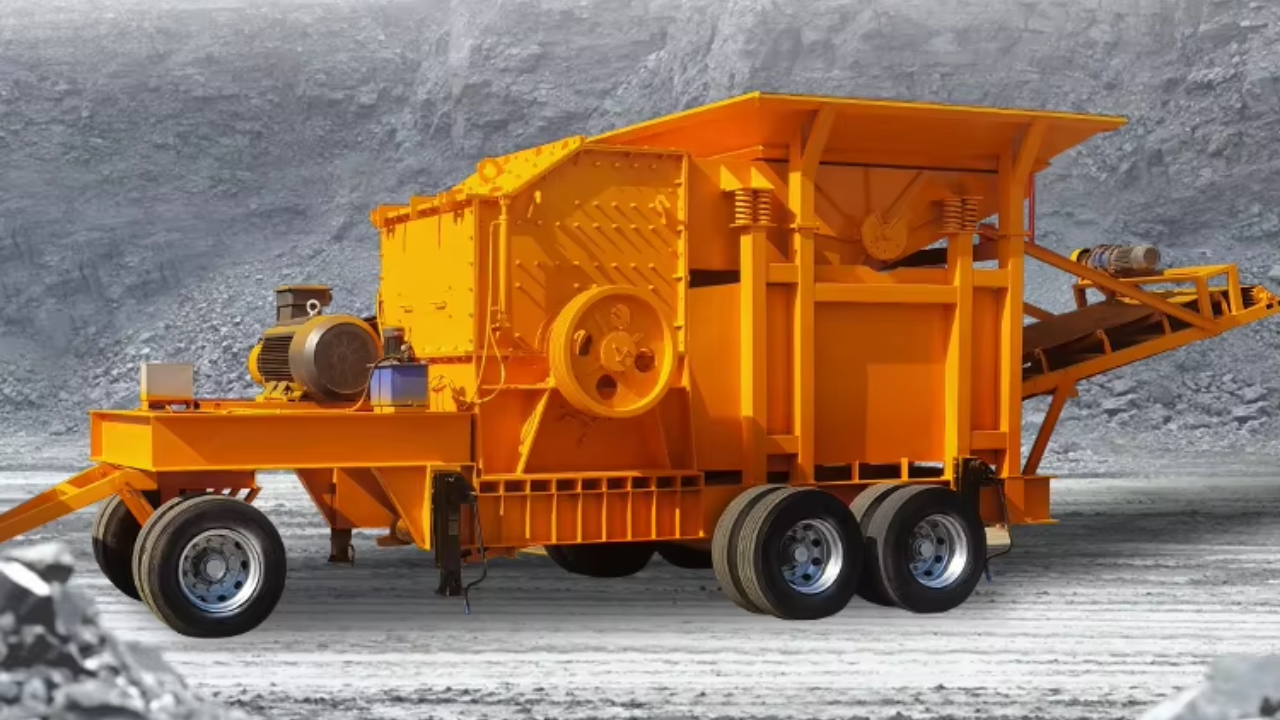The value of gold has been in use among civilizations for thousands of years. Its beauty and scarcity not only created economies but also defined power, and it turned out to be a world treasury. However, the raw gold ore is of little value until it is processed. The key role of hard ore transformation into a lucrative commodity is the involvement of a gold rock crusher. The gateway step is crushing, where the ore is crushed to release concealed gold. In its absence, further processing is unproductive and in most cases unprofitable.
The Importance of Crushing in Gold Ore Processing
Raw gold ore is unproductive. Large pieces are composed of gold particles embedded in host rock. You must cut that ore into little bits to get that gold. Crushing reduces the particle size, which enhances the efficacy of grinding and beneficiation. Contemporary crushers can do more than just that, size reduction. They assist in recycling more gold from the rock, increasing recovery and reducing costs. Every percentage of recovery translates into more profit.
Knowledge of the Gold Processing Flow
There are three significant steps in gold processing, which include crushing, grinding, and beneficiation. Crushing is always preceded, and the effectiveness of all subsequent actions depends on its effectiveness. When it is appropriately crushed, fewer blockages and less energy are consumed. Gold crushing is also helpful in dissociating the particles in the surrounding minerals. The better the liberation at this stage, the easier the separation during flotation, cyanidation, or gravity concentration. Part of the processing involves more than just preparation; it also consists of crushing.
Key Crushing Stages for Gold Ore
The crushing process is carried out in stages, each tailored to size reduction. First is primary crushing, which uses jaw crushers or coarse mobile stations to demolish huge chunks of ore. Second is secondary crushing, where typically cone crushers are utilized to reduce ore to medium-sized particles. Lastly, tertiary crushing involves fine reduction using multi-cylinder hydraulic cone crushers. This measure optimizes the release of gold particles out of the surrounding rock. The closed-circuit systems will provide continuous control and recycle any material that is too large until it reaches the required size. Such a design increases throughput and avoids losses.
Gold Ore Crusher - Technologies and Variants
Different crusher types suit other parts of the process. Jaw crushers conduct primary reduction to make boulders manageable pieces. Single-cylinder hydraulic cone crushers are often referred to as GP cone crushers and used during a medium- to fine-grained crushing process. They are affordable, easy to operate, and reduce downtime through simple regulation. Multi-cylinder hydraulic cone crushers or HP crushers, are very high-capacity and automated. They offer high reliability and performance at large-scale operations. Flexibility is added to mobile crushing stations. They can be used to crush on-site when terrain or infrastructure makes it difficult to establish a fixed density location. This adaptability can be used to reduce transportation overheads and maintain productivity even at distant sites.
The History of Crushers - How Ore Changed Into Fortune
Crushers have a direct impact on mining profitability. Effective crushing minimizes the effort of grinding mills, thereby reducing energy expenses. Effective size reduction enhances the productivity of the grinding process, as less machinery wears out and throughput time is reduced. Better liberation increases beneficiation outcomes in flotation, cyanidation, or gravity systems. The result is a greater recovery of gold using the same ore. Sturdy, robust crushers also reduce downtime. Each hour of saved repairs safeguards long-term profitability. Having the correct setup turns a crusher into a profit generator and not just a machine.
Combination of Crushing/Grinding and Beneficiation
A gold rock crusher does not operate in that vacuum. It drains into grinding and beneficiation. Ball mills and spiral classifiers are used to complement crushers, refining the crushed ore into a fine powder. A regular particle size due to crushing translates to less blockage during grinding, less energy wastage, and a smoother grinding process. Downstream recovery is also enhanced by optimizing the crushing process. Homogenously liberated particles are even more responsive when undergoing flotation, cyanidation, or drying. The chain can only be as strong as its first link, and crushing is that link.
Planning a Profitable Crushing Process
It is essential to plan a crushing operation. Ore hardness, deposit size, and site conditions all play a role. The right crusher must be suited to the job, offering both adequacy and economy. Hydraulic systems and automation ensure reliability and reduce human error. Decisions are also influenced by environmental responsibility. Current crushers minimize dust, noise, and energy efficiency. Efficiency generates profit, and sustainability is that the profit then sustains itself in the long term. An efficient system strikes a balance between productivity and environmental impact, making it a profitable operation.
Conclusion
The first and most crucial gateway in gold mining is crushing. In its absence, grinding and beneficiation cannot be successful. A gold rock crusher is not a machine; it is a profit facilitator. With the right crushing technology, raw ore transforms into wealth. Dependable crushing is vital and forms the base for profitable gold mining, paving the way for sustainable success.


